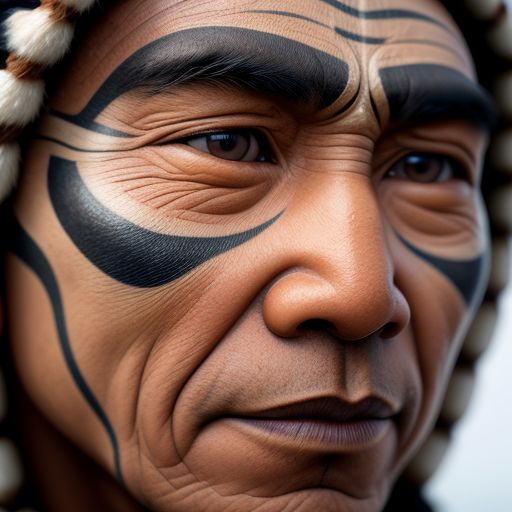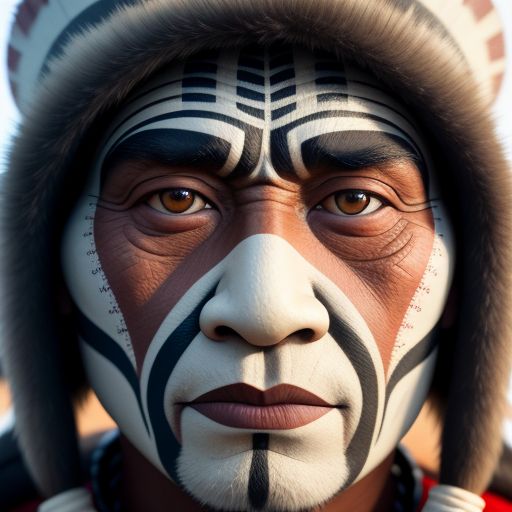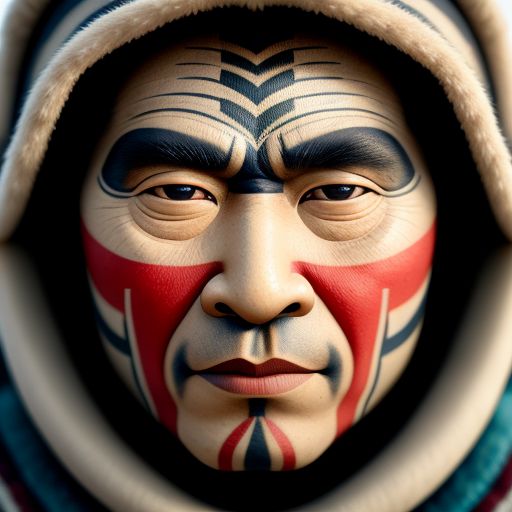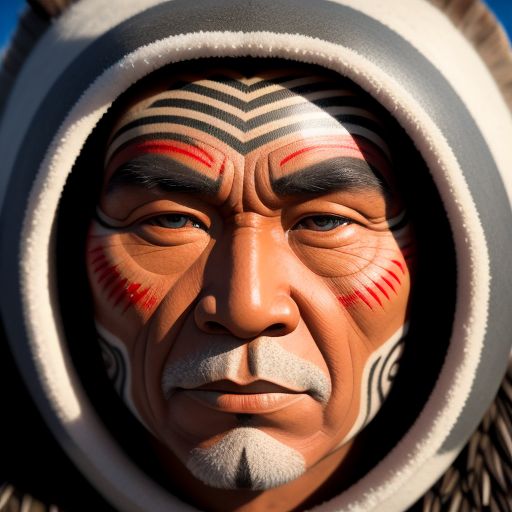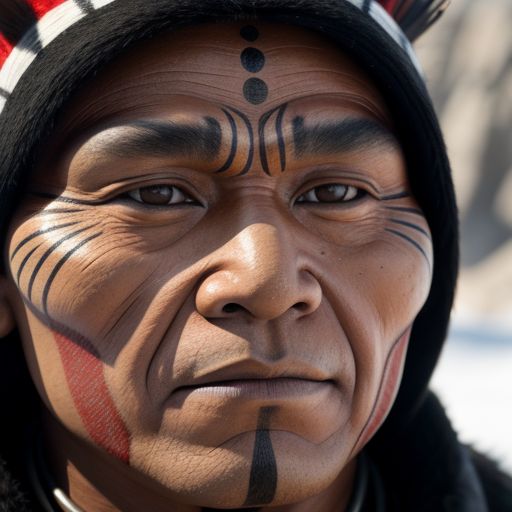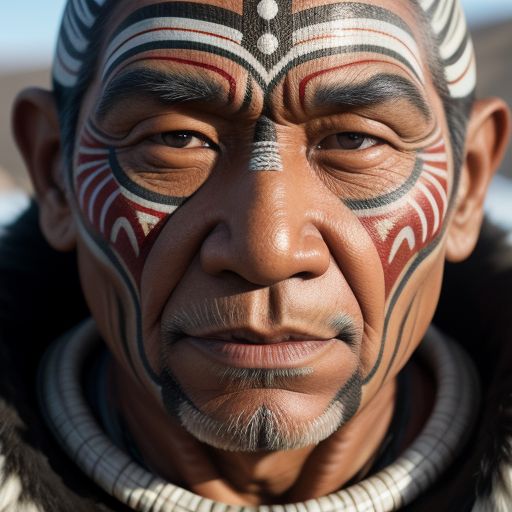Question: How do you decide how to order tracks in an album?
Answer: I didn’t this time. AI did.
Imagine listening to a song that not only resonates with the power of hard rock but also carries the depth and soul of ancient traditions. This is what the new Indigenous-inspired AI Gen Album, “Original Rock” delivers. As our world becomes increasingly interconnected, there’s a critical need to preserve and celebrate the diverse cultures that could have shaped human history.
In fact, one of TATANKA’s tenets is an alignment to Indigenous Wisdom, not merely in words but action. Applying Indigenous Wisdom to our lives offers a multitude of benefits that can greatly enhance well-being and understanding of the world. Indigenous cultures possess a deep connection to nature and a profound respect for the Earth, which can help cultivate a greater sense of mindfulness and stewardship for the environment.
Additionally, Indigenous Wisdom often places a strong emphasis on community, relationships, and interconnectedness, offering valuable insights into fostering more meaningful connections with others and promoting social harmony. For example, our facility will be a model of Architectural Indigenous Modernism. By incorporating Indigenous teachings into our daily lives, we can gain a greater appreciation for sustainability, diversity, empathy, and a more holistic understanding of ourselves and our place in the world. Ultimately, embracing Indigenous Wisdom can lead to a more balanced and fulfilling existence, both individually and collectively.
TATANKA integrates Indigenous Wisdom through other initiatives, each aligned with the UN’s Sustainable Development Goals (SDGs):
- SDG 3: Good Health and Well-being – Promoting mental and emotional wellness via music and community-based activities.
- SDG 4: Quality Education – Sharing Indigenous knowledge and traditions through educational programs.
- SDG 10: Reduced Inequalities – Fostering inclusivity and diversity by involving members from conflicting nations in their multicultural orchestra.
- SDG 11: Sustainable Cities and Communities – Emphasizing harmony and civility in communal living and decision-making processes.
This album is a quintessential illustration, a culmination of our unwavering commitment to honoring the stories, music, and histories of Indigenous communities worldwide, in TATANKA’s case, artistically. Through this project, TATANKA aims to transcend musical boundaries, creating a sonic experience that is as enlightening and empowering as it is electrifying.
If this approach resonates with you – let’s connect and discuss how we can work together! And yes, there are specific reasons TATANKA is our name.
Now that the obligatory commercial is over, enjoy the free music!

Original Rock‘s journey began with a profound appreciation for the rich traditions and struggles of Indigenous peoples around the globe. Drawing inspiration from their resilience, wisdom, and artistic expressions, we sought to create something truly unique—an album that blends the raw energy of rock music with the intricate rhythms, chants, and melodies of Indigenous cultures, leveraging emerging AI technologies in the process. This isn’t just music; it’s a modern tribute to an ancient path we have lost.
It’s a call for awareness and appreciation, a way to elevate the voices that have often been marginalized. We believe that by sharing these powerful narratives through the universal language of music, TATANKA can foster a deeper understanding and unity among all cultural groups. So, dive in; the water is warm and welcoming. Listen, watch, read, learn, and share these universal stories—let’s embark on this remarkable journey together and celebrate the global heritage that binds us all.
Original Rock (puns intended)
Free Download of all MP3s, WAVs, MP4s, images, etc.: original-rock-media.zip (1.05 TB)
01 First Nations: Return to the Earth
One of the key reasons why the Canadian First Nations are sustainable cultures is their deep connection to the land. Traditionally, the First Nations have lived in harmony with nature and have developed sustainable practices for hunting, fishing, and gathering food. They have a profound respect for the environment and understand the importance of preserving it for future generations. By adhering to traditional ecological knowledge, they are able to sustainably manage their natural resources and ensure the long-term health of their communities.
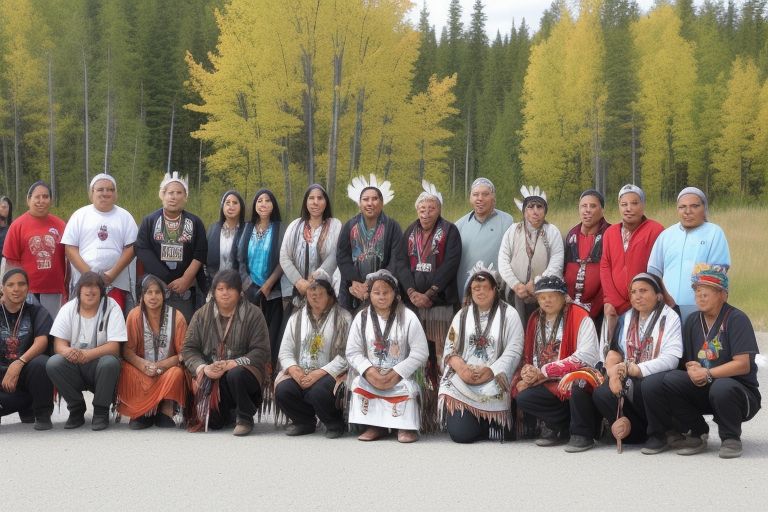
Another factor that contributes to the sustainability of the Canadian First Nations is their strong sense of community and cultural identity. Despite the challenges of colonization and assimilation, the First Nations have managed to preserve their languages, traditions, and customs. This sense of cultural continuity plays a crucial role in maintaining the resilience of their communities and ensuring their sustainability. By passing down traditional knowledge and practices to younger generations, the First Nations are able to ensure the survival of their culture for years to come.
Furthermore, the Canadian First Nations have shown a remarkable ability to adapt to changing circumstances and challenges. Throughout history, they have faced numerous hardships, including displacement, forced assimilation, and discrimination. Despite these obstacles, they have shown incredible resilience and determination to preserve their way of life. By drawing on their cultural values and strengths, the First Nations have been able to overcome adversity and continue to thrive.
In recent years, there has been a growing recognition of the importance of Indigenous knowledge and practices in promoting sustainability and mitigating the impacts of climate change. The Canadian First Nations have played a key role in advocating for environmental protection and sustainable development in their communities. By incorporating traditional knowledge into modern environmental management practices, they are able to promote sustainable development and preserve their way of life for future generations.
The Canadian First Nations are sustainable cultures that have managed to preserve their way of life and cultural identity despite the challenges they have faced. By maintaining a deep connection to the land, fostering a strong sense of community, adapting to changing circumstances, and promoting environmental sustainability, the First Nations have demonstrated their resilience and determination to thrive. Their ability to blend traditional knowledge with modern practices has positioned them as leaders in promoting sustainability and environmental stewardship. As we move forward, it is essential to continue to support and respect the cultural values and practices of the Canadian First Nations in order to ensure a sustainable future for all.
02 Inuit: Rise of the Ancients
The Inuit people have long been known for their sustainable way of life, living in harmony with the harsh Arctic environment. Their traditional practices and knowledge have allowed them to thrive in one of the most extreme environments on Earth for thousands of years.

One key aspect of Inuit sustainability is their intimate knowledge of the natural world and its resources. Through generations of trial and error, the Inuit have developed sustainable hunting and fishing practices that ensure the long-term survival of their communities. For example, they have strict rules and rituals around hunting to prevent overexploitation of animal populations. Additionally, they have a deep understanding of the seasonal cycles and migration patterns of animals, allowing them to plan their hunts in a sustainable way.
Another factor contributing to Inuit sustainability is their close-knit communities and strong social bonds. In traditional Inuit society, cooperation and sharing are highly valued, and resources are distributed equitably among community members. This communal approach helps prevent resource scarcity and ensures that everyone has enough to survive, even in challenging times. By working together and pooling their resources, the Inuit are better able to weather the harsh Arctic conditions and adapt to changing environmental circumstances.
In recent years, the Inuit have faced increasing challenges to their traditional way of life due to climate change and globalization. Thawing ice caps and melting permafrost have disrupted traditional hunting grounds and made it more difficult to access resources. Additionally, the introduction of cash economies and Western diets has led to a decline in traditional hunting and fishing practices, threatening the sustainability of Inuit communities.
Despite these challenges, the Inuit have shown resilience and adaptability in the face of change. Many communities are turning to renewable energy sources like wind and solar power to reduce their dependence on fossil fuels. They are also exploring new economic opportunities, such as ecotourism and sustainable harvesting of natural resources, to diversify their income and protect their way of life. By combining traditional knowledge with modern technologies and practices, the Inuit are finding innovative ways to maintain their sustainable culture in a rapidly changing world.
The Inuit are a shining example of how indigenous cultures can live in harmony with the natural world and sustainably manage their resources. Through their deep connection to the land, strong community bonds, and willingness to adapt to new challenges, the Inuit have shown that traditional ways of life can be resilient in the face of modern pressures. As the world grapples with the impacts of climate change and environmental degradation, we can learn valuable lessons from the Inuit about the importance of sustainability and respect for the Earth.
03 Navajo: Echoes of Ancestry
The Navajo people have long been known for their ability to live sustainably within the natural environment. Their rich cultural traditions and deep connection to the land have allowed them to thrive for centuries without causing irreparable harm to the earth. Let’s explore some of the ways in which the Navajo have maintained their sustainable practices and preserved their unique culture in the face of modern challenges.
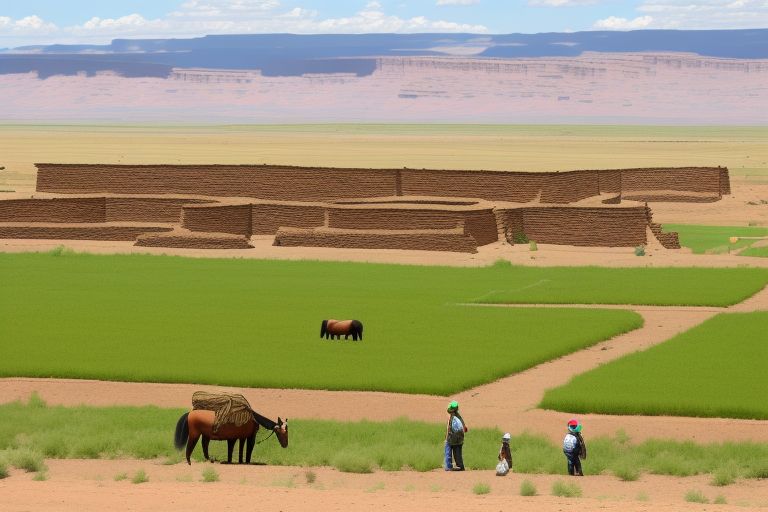
One of the key aspects of Navajo sustainability is their traditional agricultural practices. The Navajo have long relied on farming as a means of sustenance, growing crops such as corn, beans, and squash in harmony with the natural environment. They use traditional methods such as dry farming and terracing to conserve water and prevent soil erosion, ensuring that their land remains fertile for future generations. Additionally, the Navajo have a strong tradition of seed saving, preserving heirloom varieties of crops that are well-adapted to the local climate and soil conditions.
Another important aspect of Navajo sustainability is their respect for the natural world and all living beings. The Navajo have a deep spiritual connection to the land, viewing it as a sacred entity that must be protected and nurtured. They have strict taboos against overharvesting or exploiting natural resources, instead taking only what is needed and giving thanks for the gifts that they receive. This reverence for the earth has allowed the Navajo to maintain a delicate balance between human needs and the needs of the natural world.
The Navajo also practice sustainable land management techniques, such as rotational grazing and controlled burning, to maintain the health of their rangelands. By moving their livestock to different areas at different times of the year and periodically burning the grasslands to promote new growth, the Navajo ensure that the land remains healthy and productive. These practices also help to prevent desertification and soil degradation, allowing the Navajo to continue to rely on their rangelands for sustenance and economic livelihood.
In addition to their traditional agricultural and land management practices, the Navajo are also embracing modern technologies and innovations to promote sustainability. For example, many Navajo communities are turning to renewable energy sources such as solar and wind power to reduce their reliance on fossil fuels and minimize their carbon footprint. These initiatives not only help to protect the environment but also create new economic opportunities for the Navajo people, allowing them to build a more sustainable future for themselves and their descendants.
The Navajo people serve as an ideal example of how traditional cultures can coexist harmoniously with the natural world, even in the face of modern challenges. By embracing sustainable agricultural practices, respecting the earth and all living beings, practicing responsible land management, and incorporating modern technologies, the Navajo have been able to maintain their unique culture and way of life while also preserving the health of the environment. As we continue to face pressing environmental issues on a global scale, we can look to the Navajo as a source of inspiration and guidance on how to live in harmony with the earth and ensure a sustainable future for all.
04 Lakota: Return to Power
The Lakota people, part of the Sioux, have long been recognized for their sustainable practices and deep connection to the natural world. Despite facing numerous challenges such as colonization and forced assimilation, the Lakota have managed to maintain their cultural traditions and live in harmony with the environment.
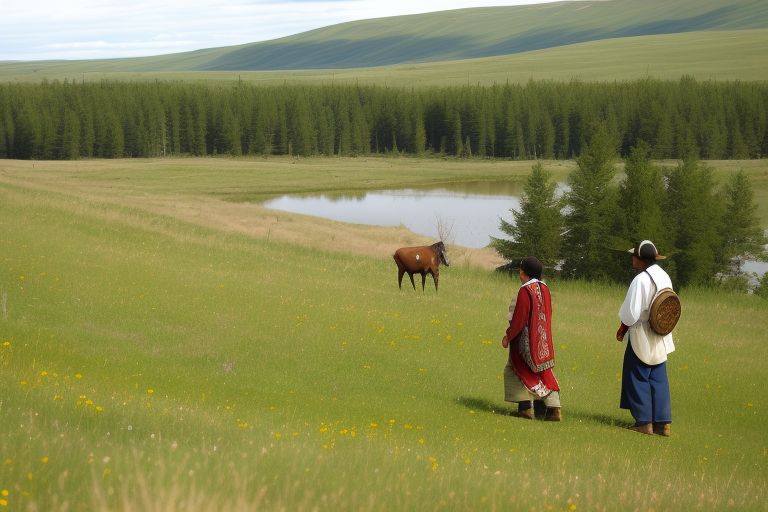
One of the key aspects of Lakota sustainability is their deep reverence for the land and the natural world. The Lakota believe that all things are interconnected and that every living being has a spirit. This belief system, known as Mitakuye Oyasin, informs their relationship to the environment and guides their actions. For example, the Lakota practice sustainable hunting and fishing techniques, and they have a tradition of giving thanks and offering prayers to the animals they have killed for sustenance.
In addition to their spiritual connection to the land, the Lakota have a strong tradition of communal living and sharing resources. Historically, the Lakota lived in extended family groups known as tiyospaye, where everyone worked together for the common good. This communal lifestyle allowed the Lakota to pool their resources and ensure that no one went without food or shelter. In modern times, many Lakota communities continue to practice this tradition of sharing and mutual support, which helps to reduce waste and promote sustainability.
Another important aspect of Lakota sustainability is their traditional knowledge of the land and natural resources. The Lakota have a deep understanding of the plants and animals in their environment, as well as the seasons and weather patterns. This knowledge allows them to live in harmony with the land and make the most efficient use of resources. For example, the Lakota have traditionally used buffalo hides for clothing and shelter, and they have developed techniques for preserving meat and other perishable goods without the use of modern technology.
Furthermore, the Lakota have a strong tradition of conservation and environmental stewardship. For example, the Lakota have long practiced controlled burns to rejuvenate grasslands and promote the growth of important plant species. They also have a tradition of using every part of the animals they hunt, and they have developed techniques for preserving and storing food without the need for refrigeration. These practices not only help to sustain the environment, but they also help to ensure the survival of the Lakota people in times of scarcity.
The Lakota are sustainable cultures in many ways. Their deep connection to the land, communal lifestyle, traditional knowledge, and conservation practices all contribute to their ability to live in harmony with the environment. By preserving their cultural traditions and passing on their knowledge to future generations, the Lakota continue to be a shining example of sustainable living in a world facing increasing environmental challenges.
05 Yanomami: Zamu Zama
The Yanomami are a group of indigenous people who live in the Amazon rainforest in South America. Despite facing challenges such as deforestation, mining, and diseases brought by outsiders, the Yanomami have managed to maintain their traditional way of life for centuries. Their sustainable practices can provide valuable lessons for modern societies struggling with environmental degradation and social inequality.
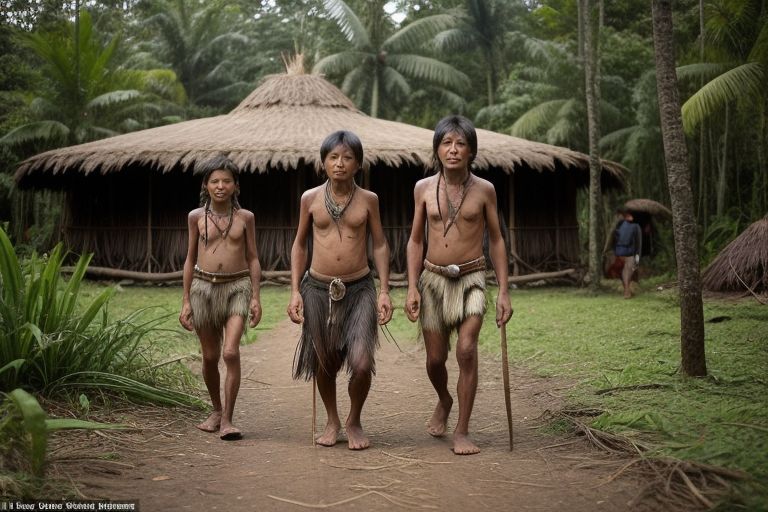
One way the Yanomami are sustainable is through their hunter-gatherer lifestyle. They rely on the resources provided by the forest for their food, shelter, and medicine. By living off the land in a sustainable manner, they avoid depleting natural resources and maintain a balanced ecosystem. This approach to resource management has allowed the Yanomami to thrive in their environment for generations without causing irreversible damage to the land.
Another way the Yanomami are sustainable is through their communal living arrangements. The Yanomami live in small villages or settlements called shabonos, where they work together to meet their basic needs. This sense of community fosters cooperation and mutual support, which is essential for the survival of the group. By sharing resources and labor, the Yanomami are able to achieve a level of self-sufficiency that is not dependent on external factors.
Furthermore, the Yanomami have a deep respect for the environment and the spirits that inhabit it. They believe that the forest is a sacred place that must be protected and preserved for future generations. This spiritual connection to the land guides their actions and shapes their attitudes towards the natural world. By viewing nature as a source of sustenance and spiritual renewal, the Yanomami are motivated to live in harmony with their surroundings and avoid overexploitation.
Additionally, the Yanomami have a complex social structure that values equality and cooperation. Decision-making is done collectively, with everyone having a voice in the community. This inclusive approach ensures that the needs of all members are met and that resources are distributed fairly. This egalitarian system helps to reduce social tensions and promote a sense of unity among the Yanomami, which is crucial for their long-term sustainability.
The Yanomami are sustainable cultures that offer valuable insights into living in harmony with the environment and each other. By practicing sustainable hunting and gathering, communal living, environmental stewardship, and social equality, the Yanomami have thrived in the Amazon rainforest for centuries. Their example serves as a reminder of the importance of preserving traditional knowledge and values in the face of modern challenges. As we strive to create a more sustainable world, we can learn from the wisdom of indigenous peoples like the Yanomami and work towards a future where humans and nature coexist in balance.
06 Tikuna: Retorno ao Poder
The Tikuna are an indigenous group that inhabits the Amazon Rainforest in Brazil, Colombia, and Peru. They are known for their sustainable way of life that has allowed them to thrive in the harsh conditions of the rainforest for centuries.
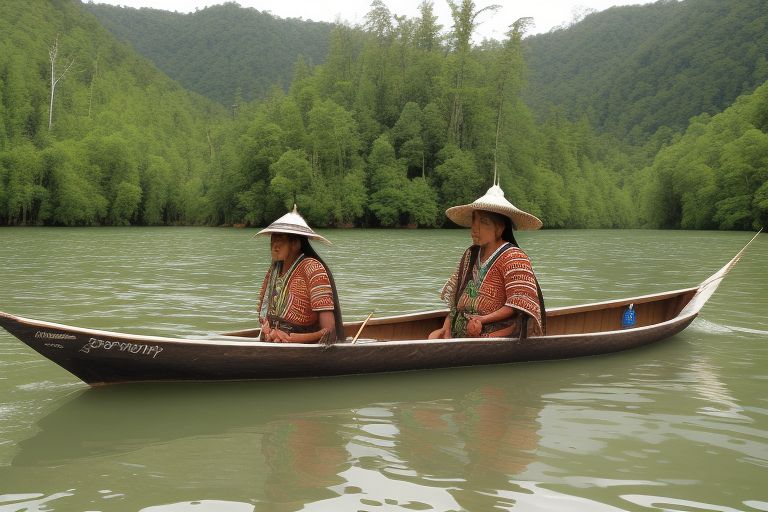
First and foremost, the Tikuna have a deep respect and connection to the natural world around them. They understand the delicate balance of the ecosystem and work to maintain it through sustainable practices such as hunting, fishing, and agriculture. The Tikuna have a vast knowledge of the plants and animals in their environment and use this knowledge to ensure that they do not overexploit any resources.
Additionally, the Tikuna have developed sustainable agricultural practices that allow them to grow food in harmony with the rainforest. They practice shifting cultivation, also known as slash-and-burn agriculture, where they clear a small plot of land, plant crops for a few years, and then allow the land to regenerate while they move on to a new plot. This allows the soil to recover and prevents soil erosion, ensuring the long-term sustainability of their food production.
Furthermore, the Tikuna have a strong sense of community and cooperation that helps them to thrive in the rainforest. They work together to share resources and knowledge, and decisions are made collectively to ensure the well-being of the entire community. This communal way of life helps to reduce competition and conflict and fosters a sense of unity and solidarity among the Tikuna.
In addition to their sustainable practices in food production, the Tikuna also have a deep connection to the spiritual world that guides their actions and beliefs. They believe that all living beings, including plants and animals, have spirits that must be respected and honored. This spiritual connection motivates the Tikuna to live in harmony with nature and to treat the environment with reverence and care.
The Tikuna are sustainable cultures that have been able to thrive in the Amazon Rainforest for generations due to their deep respect for the natural world, sustainable agricultural practices, strong sense of community, and spiritual beliefs. Their way of life serves as a valuable example of how indigenous cultures can live in harmony with the environment and provide a model for sustainable living for the rest of the world.
07 Nenet: Reindeer Dreams
The Nenet people, a group of nomadic reindeer herders living in the Arctic region of Russia, are known for their unique and sustainable way of life. Despite facing challenges such as climate change and industrialization, the Nenet have managed to maintain their traditional cultural practices and preserve their environment for future generations. Following are some of the key ways in which the Nenet are able to sustain their culture and way of life.
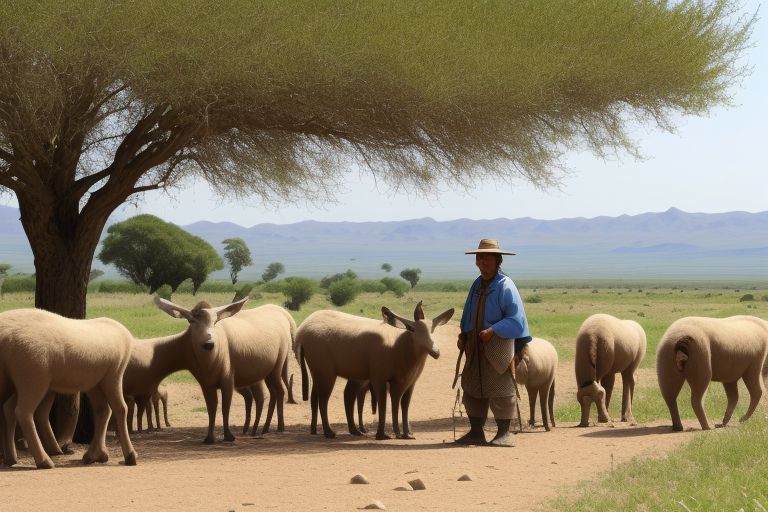
One of the most important aspects of the Nenet culture is their deep connection to the land and the animals they rely on for survival. The Nenet have a profound respect for nature and understand the importance of maintaining a harmonious relationship with the environment. This is evident in their practice of reindeer herding, which is not only a means of sustenance but also a way of life that has been passed down through generations. By living in tune with the natural world, the Nenet are able to ensure the sustainability of their traditional practices.
Another important aspect of Nenet sustainability is their communal way of life. The Nenet live in small family units known as brigades, which work together to manage the reindeer herds and share resources. This sense of community and cooperation allows the Nenet to overcome challenges and adapt to changing environmental conditions. By working together, the Nenet are able to preserve their cultural heritage and maintain their way of life in the face of external threats.
Furthermore, the Nenet have developed a deep knowledge of their environment and the resources it provides. They have a sophisticated understanding of the landscape, weather patterns, and animal behavior, which allows them to make informed decisions about their herding practices and movement patterns. This knowledge is passed down from elders to younger generations, ensuring that traditional wisdom is preserved and applied in a changing world.
In addition, the Nenet have a strong sense of cultural identity and pride. They take great pride in their history, language, and customs, and are committed to preserving their unique way of life. This sense of cultural identity is an important factor in the sustainability of the Nenet culture, as it provides them with a strong foundation on which to build their future.
Overall, the Nenet are a remarkable example of a sustainable culture that has managed to thrive in a challenging environment. By maintaining their connection to the land, living communally, drawing on traditional knowledge, and preserving their cultural identity, the Nenet have been able to sustain their way of life for centuries. As we face increasing environmental and social challenges, there is much that we can learn from the Nenet about how to build a more sustainable future for all.
08 Chimbu Skeleton Dancers: Spirits of the Mountain
The Chimbu Skeleton Dancers, a traditional cultural group from the Chimbu Province of Papua New Guinea, have long been recognized for their unique and sustainable cultural practices. The Chimbu people have maintained their traditional dances and rituals for generations, passing down their knowledge and skills from one generation to the next. This sustainability is evident in the way the Chimbu Skeleton Dancers continue to thrive and evolve, despite the challenges of modernization and globalization.
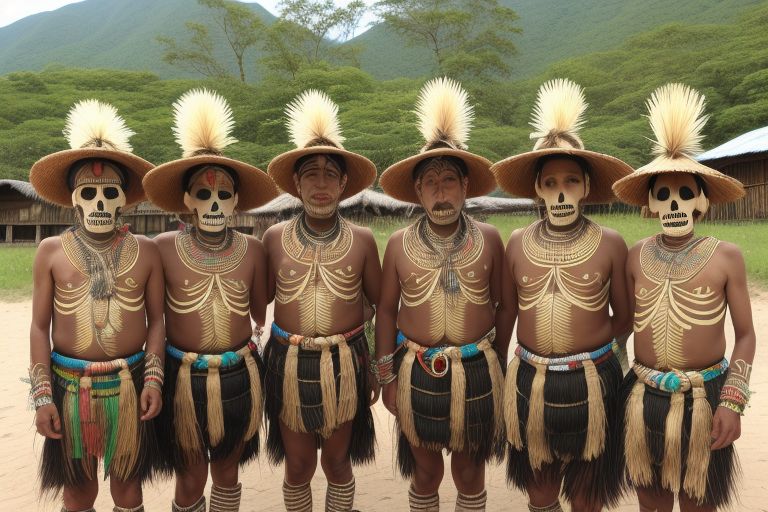
One key aspect of the sustainability of the Chimbu Skeleton Dancers is their strong sense of community and collective identity. The dancers come together regularly to practice their dances, create new costumes, and perform at important cultural events and ceremonies. This sense of community allows the Chimbu people to preserve their cultural heritage and pass it on to future generations. By working together and supporting each other, the Chimbu Skeleton Dancers ensure that their traditions will continue to thrive.
Another way in which the Chimbu Skeleton Dancers are sustainable is through their deep connection to their natural environment. The Chimbu people have a strong spiritual connection to the land, which is reflected in their dances and rituals. The dancers often incorporate elements of nature into their performances, such as using leaves, flowers, and other natural materials to create elaborate costumes and decorations. This connection to the natural world helps to ground the Chimbu people in their cultural traditions and ensures that they continue to respect and preserve their environment for future generations.
Additionally, the Chimbu Skeleton Dancers are sustainable in their ability to adapt and evolve over time. While the core of their cultural practices remains intact, the dancers have also incorporated new elements and influences into their performances. For example, they may incorporate modern music or dance moves into their routines, or collaborate with other cultural groups to create innovative and dynamic performances. This ability to adapt and evolve ensures that the Chimbu Skeleton Dancers remain relevant and engaging for audiences both within Papua New Guinea and beyond.
The Chimbu Skeleton Dancers are a perfect example of sustainable cultural practices. Through their strong sense of community, deep connection to their natural environment, and ability to adapt and evolve, the Chimbu people have preserved their cultural heritage for generations. Their commitment to their traditions and their willingness to embrace change have enabled the Chimbu Skeleton Dancers to thrive in an ever-changing world. As we look to the future, we can learn valuable lessons from the Chimbu people about the importance of preserving and celebrating our cultural heritage.
09 Sentinelese: Return to the Shell
The Sentinelese are an indigenous tribe living on North Sentinel Island in the Andaman Islands of India. They are one of the last remaining uncontacted tribes in the world, with little to no interaction with the outside world. Despite their isolation, the Sentinelese have developed sustainable ways of living that are worth studying and learning from.

One way in which the Sentinelese are a sustainable culture is their reliance on natural resources for their survival. The tribe utilizes resources from the land and sea, such as fish, coconuts, and wild fruits, for food and materials for shelter and tools. They have a deep knowledge of their environment and how to sustainably harvest resources without depleting them. This demonstrates a deep connection to and respect for the natural world, which is essential for long-term sustainability.
Another aspect of Sentinelese culture that contributes to their sustainability is their communal way of living. The tribe operates as a close-knit community, where decisions are made collectively and resources are shared among all members. This sense of community fosters cooperation and support among individuals, ensuring that everyone’s needs are met and that no one is left behind. This communal approach to living is inherently sustainable, as it promotes equality, cooperation, and stewardship of resources for the benefit of all.
The Sentinelese also have a minimal impact on the environment, as they live in harmony with nature rather than exploiting it for personal gain. They do not engage in large-scale agriculture, deforestation, or industrial activities that can harm the land and disrupt ecosystems. Instead, they practice sustainable farming and hunting techniques that allow them to maintain a balance with the natural world. By living in tune with their environment, the Sentinelese are able to preserve the integrity of their island and ensure that it remains a healthy and diverse ecosystem for future generations.
Furthermore, the Sentinelese have a deep cultural knowledge and oral tradition that has been passed down through generations. This knowledge includes survival skills, medicine, and stories that teach important lessons about their history and how to live harmoniously with the land. By preserving and passing on this cultural wisdom, the Sentinelese are able to maintain their sustainable way of life and adapt to changing environmental conditions. This cultural continuity is crucial for sustaining their way of life and ensuring that their traditional knowledge is not lost.
The Sentinelese are a sustainable culture that offers valuable lessons for modern society. Their reliance on natural resources, communal living, minimal environmental impact, and cultural knowledge contribute to their ability to live in harmony with the land and maintain a sustainable way of life. By studying and respecting the practices of the Sentinelese, we can learn how to better care for our planet and ensure a sustainable future for all.
10 Khoisan: Return of the Ancients
The Khoisan people, also known as the San and the Bushmen, are indigenous groups living in southern Africa. They have a long history of sustainable living practices that have allowed them to thrive in the harsh desert environments of the Kalahari and Namib deserts. There are several ways in which the Khoisan have been able to maintain their sustainable lifestyles.
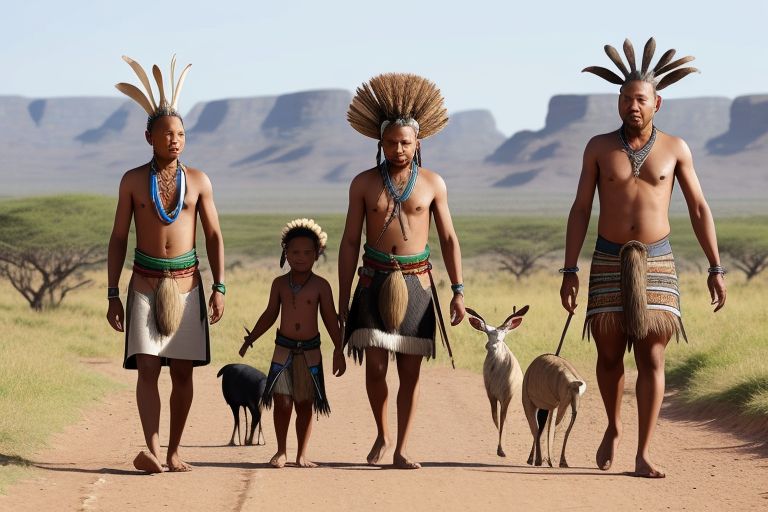
First and foremost, the Khoisan have a deep respect for the environment and understand the importance of living in harmony with nature. They have a profound knowledge of the land and its resources, and have developed sophisticated hunting and gathering techniques that allow them to sustain themselves without causing harm to the ecosystem. For example, they use traditional bow and arrow hunting methods that minimize the impact on animal populations.
Secondly, the Khoisan have a strong sense of community and cooperation that enables them to share resources and support each other in times of scarcity. They have developed complex social structures based on reciprocity and mutual aid, which helps to ensure that everyone in the community has access to food, water, and shelter. This collaborative approach to survival has been essential to their long-term sustainability.
Additionally, the Khoisan have a culture of simplicity and minimalism that helps them to minimize their impact on the environment. They live in small, mobile settlements and only take what they need from the land, leaving the rest untouched. This allows the ecosystem to regenerate and ensures that resources will be available for future generations.
Furthermore, the Khoisan have a deep spiritual connection to the land and view themselves as stewards of the environment. They believe that they are bound to protect and preserve the earth for future generations, and this ethos guides their sustainable living practices. Their traditional rituals and ceremonies often center around honoring the natural world and expressing gratitude for the gifts it provides.
The Khoisan people have demonstrated remarkable resilience and adaptability in their sustainable living practices. Their deep understanding of the environment, strong sense of community, culture of simplicity, and spiritual connection to the land have enabled them to thrive for thousands of years in some of the harshest environments on earth. As the global community faces increasing environmental challenges, there are valuable lessons that can be learned from the Khoisan about how to live in harmony with nature and ensure the long-term sustainability of our planet.
11 Saami: Reclaim the North
The Saami people, also known as the Sami, are an indigenous group inhabiting the Arctic regions of Norway, Sweden, Finland, and Russia. Despite facing challenges such as climate change and encroachment on their traditional lands, the Saami have managed to maintain sustainable cultures that are deeply rooted in their connection to the environment. Below we explore some of the ways in which the Saami practice sustainability and preserve their cultural heritage.
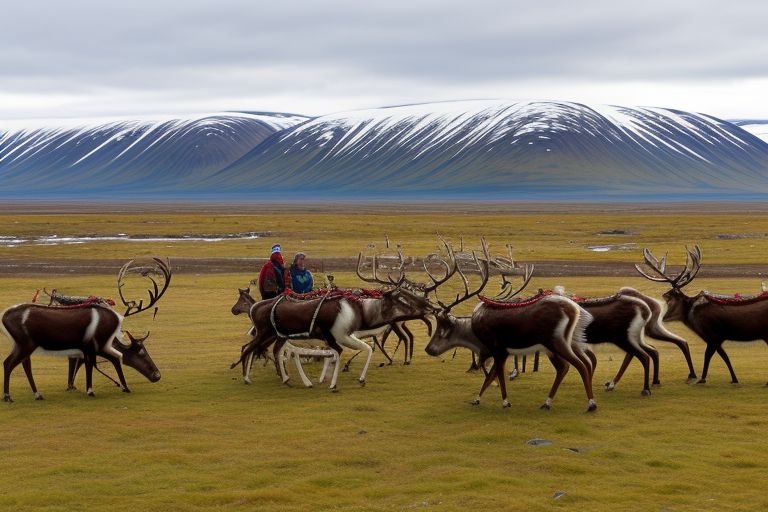
One of the key aspects of Saami sustainability is their traditional reindeer herding practices. Reindeer herding has been a central part of Saami culture for centuries, providing them with food, clothing, and a means of transportation. The Saami have a deep respect for the reindeer and have developed sustainable grazing practices that ensure the health of the herds and the land they graze on. By moving their herds to different pastures throughout the year, the Saami prevent overgrazing and allow vegetation to regenerate, thus maintaining a healthy ecosystem.
In addition to their reliance on reindeer herding, the Saami have also adapted to modern challenges by incorporating sustainable practices into their daily lives. For example, many Saami communities have embraced renewable energy sources such as wind and solar power, reducing their dependence on fossil fuels and mitigating the effects of climate change. By harnessing the power of the natural elements, the Saami are able to maintain their traditional way of life while also protecting the environment for future generations.
Furthermore, the Saami have a strong sense of cultural identity that is deeply intertwined with their environment. Traditional Saami knowledge of the land and its resources has been passed down through generations, allowing them to live in harmony with nature and adapt to changing conditions. By preserving their language, customs, and traditional crafts, the Saami are able to maintain a strong sense of community and connection to their heritage, fostering a sustainable culture that is resilient in the face of external pressures.
Despite the challenges they face, the Saami continue to advocate for the protection of their lands and resources, working to preserve their way of life for future generations. Through political activism, legal challenges, and partnerships with environmental organizations, the Saami are able to assert their rights as indigenous peoples and protect their cultural and ecological heritage. By standing up for their beliefs and values, the Saami serve as an inspiring example of how indigenous cultures can maintain sustainable practices in the modern world.
The Saami people have demonstrated a unique blend of tradition and innovation that allows them to thrive in a rapidly changing world. By incorporating sustainable practices into their daily lives, preserving their cultural heritage, and advocating for environmental protection, the Saami serve as a model for indigenous communities around the globe. Through their deep connection to the land and their commitment to sustainability, the Saami continue to inspire others to embrace traditional knowledge and live in harmony with the natural world.
12 Koryak (North Kamchatka): Koryak Rise
The Koryak people, indigenous to the Kamchatka Peninsula in Russia, have long been known for their sustainable way of life. Despite facing challenges like climate change and globalization, the Koryak have managed to maintain their traditional practices and live in harmony with their environment. There are several key ways in which the Koryak demonstrate their commitment to sustainability, including their use of traditional knowledge, respect for nature, and emphasis on community cooperation.
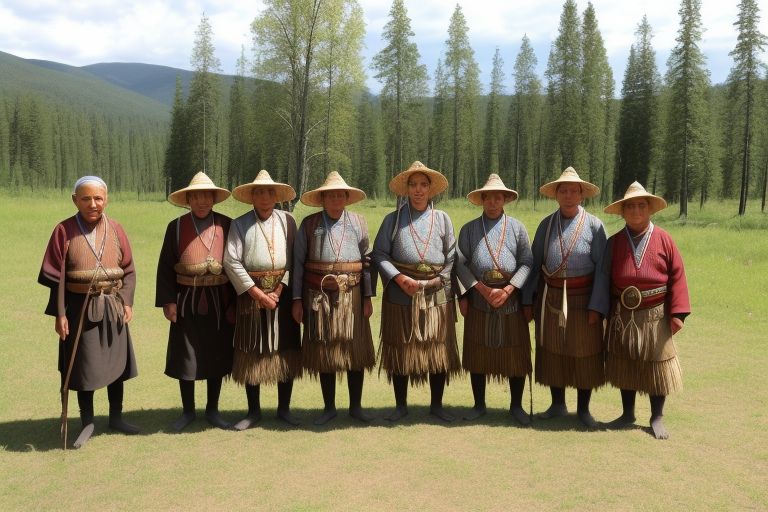
One of the key ways in which the Koryak demonstrate their sustainable culture is through their use of traditional knowledge. The Koryak have a deep understanding of the natural world and have developed intricate systems of knowledge about the plants, animals, and landscapes of their region. This traditional knowledge is passed down through generations and guides the Koryak in their hunting, fishing, and gathering activities. By relying on this knowledge, the Koryak are able to ensure the long-term health and sustainability of their environment.
Another way in which the Koryak demonstrate their commitment to sustainability is through their respect for nature. The Koryak have a strong spiritual connection to the land and sea, viewing them as sacred and deserving of reverence and protection. This respect for nature is reflected in the Koryak’s traditional practices, which are designed to minimize their impact on the environment. For example, the Koryak use only what they need from the land and sea, and make sure to give thanks for what they take.
Community cooperation is also a key aspect of Koryak sustainability. The Koryak live in small, close-knit communities that work together to manage their resources and address common challenges. This cooperative approach allows the Koryak to pool their knowledge and resources, strengthening their collective ability to adapt to changing environmental conditions. By working together, the Koryak are able to ensure that everyone in the community has access to the resources they need to thrive, while also minimizing their impact on the environment.
The Koryak are a good example of sustainable culture. Through their use of traditional knowledge, respect for nature, and emphasis on community cooperation, the Koryak have managed to maintain their way of life in harmony with their environment. In a world facing increasing environmental challenges, the Koryak offer valuable lessons in how indigenous cultures can adapt and thrive in sustainable ways. As we continue to grapple with issues like climate change and resource depletion, we can look to the Koryak as a model of resilience and sustainability.
13 Ainu: Rise of the Ainu
The Ainu people are an indigenous group in Japan with a long history and rich cultural heritage. Despite facing numerous challenges and threats to their way of life, the Ainu have shown tremendous resilience and adaptability in maintaining sustainable practices that have allowed them to endure for generations. There are several ways in which the Ainu are sustainable cultures, including their unique spiritual beliefs, traditional ecological knowledge, self-sufficiency practices, and efforts to preserve their language and cultural traditions.
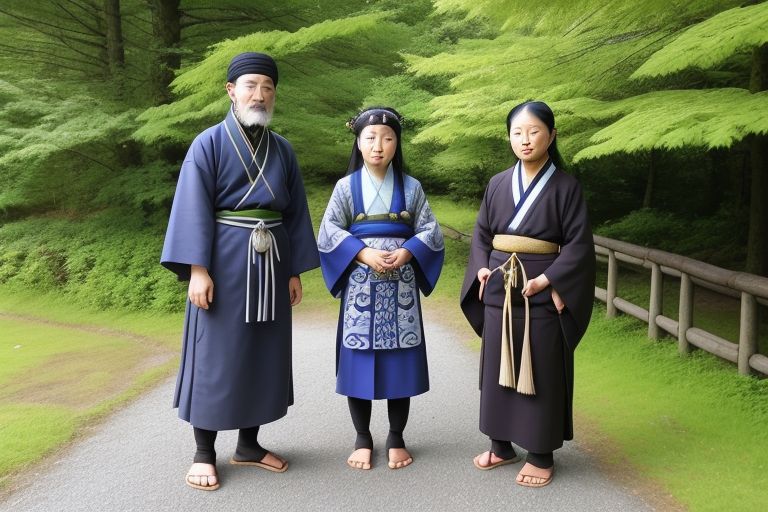
One of the key reasons the Ainu are sustainable cultures is their spiritual beliefs, which emphasize harmony with nature and a deep reverence for the natural world. This worldview has guided the Ainu in their interactions with the environment, leading them to develop sustainable practices that minimize harm to the earth and its resources. Through rituals and ceremonies that honor the spirits of animals and plants, the Ainu have cultivated a deep connection to the land and a profound respect for the interconnectedness of all living beings.
In addition to their spiritual beliefs, the Ainu are also sustainable cultures because of their traditional ecological knowledge, which has been passed down through generations and plays a crucial role in their continued survival. This knowledge includes expertise in hunting, fishing, gathering, and agriculture, as well as a deep understanding of the local ecosystems and seasonal patterns. By practicing sustainable resource management techniques and maintaining a balance between human activities and the natural environment, the Ainu have been able to sustain themselves and thrive in their ancestral lands.
Furthermore, the Ainu are sustainable cultures because of their self-sufficiency practices, which prioritize local production and consumption as a means of reducing waste and promoting environmental sustainability. Traditional Ainu communities are typically small-scale and decentralized, with each family or village responsible for meeting its own needs through farming, fishing, hunting, and gathering. This self-reliant approach to living has allowed the Ainu to minimize their ecological footprint and maintain a high degree of independence from external sources of food and material goods.
Finally, the Ainu are sustainable cultures because of their efforts to preserve their language and cultural traditions, which are essential components of their identity and heritage. Despite centuries of colonization and assimilation efforts by the Japanese government, the Ainu have worked tirelessly to revitalize their language, folklore, music, and arts through education, cultural events, and advocacy initiatives. By keeping their cultural traditions alive and passing them on to future generations, the Ainu are ensuring that their unique way of life will continue to endure and thrive in the face of modern challenges.
The Ainu are sustainable cultures due to their spiritual beliefs, traditional ecological knowledge, self-sufficiency practices, and cultural preservation efforts. By drawing on these strengths and resources, the Ainu have been able to sustain themselves and their way of life for centuries, demonstrating a remarkable resilience and adaptability in the face of adversity. As indigenous peoples continue to face threats to their lands, cultures, and identities around the world, the example of the Ainu serves as a powerful reminder of the importance of sustainability, resilience, and cultural pride in the face of change.
14 Aboriginal: Warrior’s Call
Aboriginal cultures have endured for thousands of years, relying on sustainable practices and deep connection to the land. Their traditional ways of life prioritize conservation and harmony with nature, making them excellent models for sustainable living in modern society. Let’s explore a few ways in which Aboriginal cultures are sustainable and how we can learn from their practices.
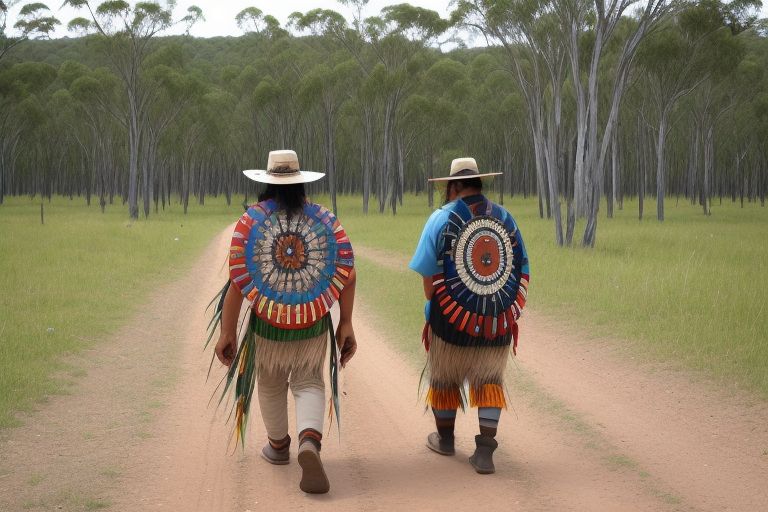
One key aspect of Aboriginal sustainability is their relationship with the land. Aboriginal peoples view the land as a living entity, to be respected and cared for. This deep connection to the earth guides their actions and ensures they do not exploit resources recklessly. For example, Aboriginal hunting and gathering practices are based on principles of reciprocity and balance, ensuring that resources are used in a way that allows them to regenerate and sustain future generations. By living in harmony with nature, Aboriginal peoples have been able to sustain their cultures for millennia without depleting the land.
Another important aspect of Aboriginal sustainability is their traditional knowledge systems. Aboriginal cultures have developed intricate knowledge of their environments over generations, allowing them to adapt to changing conditions and utilize resources in a sustainable manner. This knowledge is passed down through oral traditions and cultural practices, ensuring that it remains relevant and accessible to future generations. By valuing and preserving their traditional knowledge, Aboriginal peoples are able to adapt to modern challenges while maintaining their sustainable way of life.
Furthermore, Aboriginal cultures prioritize community and cooperation, fostering strong social networks and collective decision-making processes. This sense of communal responsibility enables Aboriginal peoples to address environmental issues and resource management in a holistic way, considering the needs of the entire community and future generations. By working together and sharing resources, Aboriginal communities are able to ensure the sustainability of their cultures and the well-being of their people.
In addition to their sustainable practices, Aboriginal cultures also demonstrate resilience in the face of external pressures and challenges. Despite colonialism, displacement, and ongoing discrimination, Aboriginal peoples have maintained their cultural traditions and connection to the land. This resilience is a testament to the strength and perseverance of Aboriginal cultures, which continue to thrive and inspire others to embrace sustainability and stewardship of the earth.
Aboriginal cultures offer valuable lessons in sustainability and environmental stewardship. By prioritizing conservation, traditional knowledge, community, and resilience, Aboriginal peoples have sustained their cultures for generations. As we face mounting environmental challenges in the modern world, we can learn from Aboriginal practices and values to create a more sustainable and harmonious society. By embracing the wisdom of Aboriginal cultures, we can forge a more sustainable future for all.
15 Maori: Return to Mana
The Maori people of New Zealand have long been considered a sustainable culture due to their deep connection to the land and their traditional practices that prioritize environmental conservation. One way in which the Maori have demonstrated their sustainable culture is through their traditional farming techniques. The Maori have long practiced sustainable agriculture, utilizing crop rotation and organic farming methods to ensure the longevity of their land and resources. By respecting the natural cycles and rhythms of the land, they have been able to sustain themselves for generations without depleting the earth’s resources.
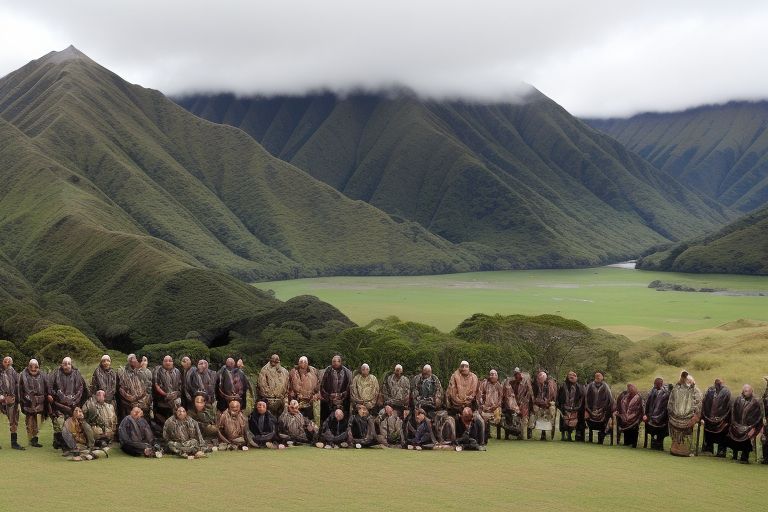
Furthermore, the Maori have a strong tradition of conservation and stewardship of the land. They believe that all living things are connected and that it is their responsibility to protect and preserve the natural world. This belief is evident in their practices of sustainable hunting and fishing, where they only take what they need and ensure that they do not harm the balance of the ecosystem. By living in harmony with nature and respecting the interconnectedness of all life forms, the Maori have been able to maintain a sustainable way of life for centuries.
In addition to their sustainable agricultural practices and conservation efforts, the Maori also place a strong emphasis on community and collective well-being. They believe in the concept of kaitiakitanga, or guardianship, which encourages individuals to take care of the land and resources for the benefit of future generations. This collective mindset ensures that the Maori work together to protect their environment and sustain their culture for the long term.
Furthermore, the Maori have a rich oral tradition that has been passed down through generations, sharing knowledge and wisdom about sustainable living practices. These stories and teachings have provided a strong foundation for the Maori to continue their sustainable way of life and to pass on their cultural values to future generations. By valuing and preserving their traditional knowledge, the Maori have been able to adapt to modern challenges while maintaining their sustainable culture.
The Maori people have demonstrated their sustainable culture through their traditional farming techniques, conservation efforts, collective mindset, and oral tradition. Their deep connection to the land, respect for nature, and commitment to preserving their cultural heritage have allowed them to thrive for centuries while maintaining a harmonious relationship with the environment. As the world faces increasing challenges related to climate change and environmental degradation, the Maori offer valuable insights into how traditional cultures can provide sustainable solutions for a more sustainable future.
16 Kung San: Return To Our Roots
The Kung San, also known as the !Kung, are indigenous hunter-gatherer communities living in the Kalahari Desert in southern Africa. They have captured the attention of researchers and anthropologists for their sustainable way of life, which has allowed them to survive in one of the harshest environments on Earth for thousands of years. There are several ways in which the Kung San exhibit sustainable practices that have helped them thrive as a culture.
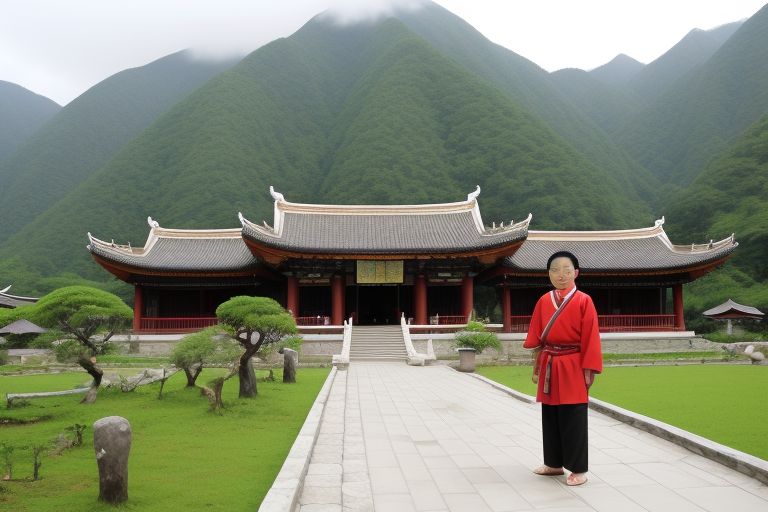
First and foremost, the Kung San have a deep understanding of their environment and the natural resources it provides. Their knowledge of the local flora and fauna, as well as weather patterns and water sources, allows them to utilize these resources in a sustainable manner. They have honed their hunting and gathering skills over generations, ensuring that they only take what they need from the land and leaving the ecosystem intact. By not overexploiting their environment, the Kung San have been able to maintain a balanced relationship with nature that allows them to sustain their way of life.
Another key aspect of the Kung San’s sustainability is their social organization and communal values. The Kung San live in tight-knit bands of extended family members, sharing resources and responsibilities among all members of the group. This communal lifestyle fosters cooperation and solidarity, enabling the Kung San to work together to meet the needs of the group as a whole. By prioritizing the well-being of the community over individual gain, the Kung San are able to ensure that everyone has access to food, water, and shelter, even in times of scarcity.
Furthermore, the Kung San have developed a complex system of sharing and reciprocity that is essential to their sustainability. When one member of the group is successful in a hunt or gathering expedition, they are expected to share their spoils with the rest of the band. This ensures that resources are distributed evenly among all members of the community, reducing the risk of food shortages and promoting social cohesion. In return, when another member of the group is successful, they will reciprocate by sharing their bounty with the rest of the band. This system of sharing not only strengthens social ties but also ensures that resources are utilized efficiently and sustainably.
The Kung San exhibit a remarkable level of sustainability in their way of life, which has allowed them to thrive in the harsh environment of the Kalahari Desert for thousands of years. Through their deep knowledge of the environment, communal values, and system of sharing and reciprocity, the Kung San have developed a sustainable culture that prioritizes the well-being of the community and the preservation of the natural world. Their practices serve as a valuable lesson for modern societies on how to live in harmony with the planet and ensure the long-term survival of human cultures.
17 Berbers of Morocco: Ancient Echoes of the Atlas
The Berbers of Morocco are indigenous peoples who have inhabited North Africa for thousands of years. Throughout their history, they have developed sustainable practices that have allowed them to thrive in the harsh desert environment. Today, the Berbers continue to uphold their traditional ways of life, which are closely tied to the land and the natural resources around them.
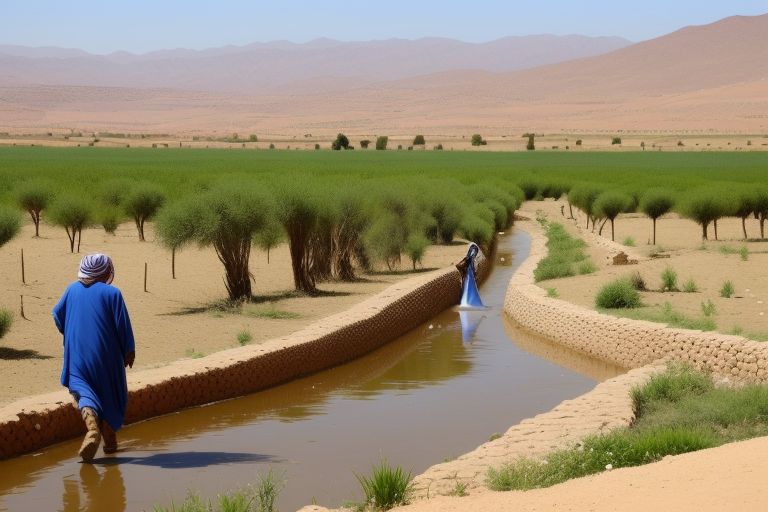
One way in which the Berbers of Morocco are sustainable cultures is through their use of water resources. In the arid climate of the Sahara Desert, water is a precious commodity. The Berbers have developed sophisticated irrigation systems, such as the qanat system, which allows them to efficiently distribute water to their crops. They also practice water conservation techniques, such as collecting rainwater and using it for household purposes. By carefully managing their water resources, the Berbers are able to sustain their agricultural practices and ensure food security for their communities.
Another aspect of Berber culture that contributes to their sustainability is their traditional knowledge of medicinal plants. The Berbers have a deep understanding of the medicinal properties of various plants and herbs that grow in their region. They use these plants to treat a variety of ailments, from stomachaches to skin rashes. By relying on natural remedies rather than modern pharmaceuticals, the Berbers are able to maintain their health and well-being without depleting the natural resources around them.
In addition to their sustainable agriculture and traditional medicine practices, the Berbers of Morocco also have a strong sense of community and cultural preservation. They place a high value on self-sufficiency and mutual support, which allows them to weather environmental challenges and economic hardships. The Berber people have a rich oral tradition, passed down through generations, that preserves their history and cultural heritage. By maintaining their traditions and sharing their knowledge with younger generations, the Berbers ensure the continuity of their sustainable practices and way of life.
Furthermore, the Berbers of Morocco have a strong connection to the land and a respect for the environment. They believe in living in harmony with nature and preserving the delicate balance of ecosystems. The Berbers practice sustainable land management techniques, such as crop rotation and terracing, to prevent soil erosion and maintain soil fertility. They also have a deep reverence for the natural world, which is reflected in their rituals and ceremonies that honor the earth and its resources. By stewarding the land and respecting the environment, the Berbers are able to sustain their way of life and protect their cultural heritage for future generations.
The Berbers of Morocco are sustainable cultures that have adapted to their environment through their traditional knowledge and practices. By efficiently managing their water resources, using natural remedies for health care, preserving their cultural heritage, and respecting the environment, the Berbers are able to thrive in the harsh desert landscape. Their commitment to sustainability serves as a model for other cultures around the world, demonstrating the importance of living in harmony with nature and preserving traditional ways of life.
18 Maasai: Return to the Fire
The Maasai tribe, a semi-nomadic pastoralist community located in Kenya and Tanzania, has long been known for their sustainable way of life. This essay will explore the various ways in which the Maasai are able to maintain their traditional practices and continue to thrive in an ever-changing world.
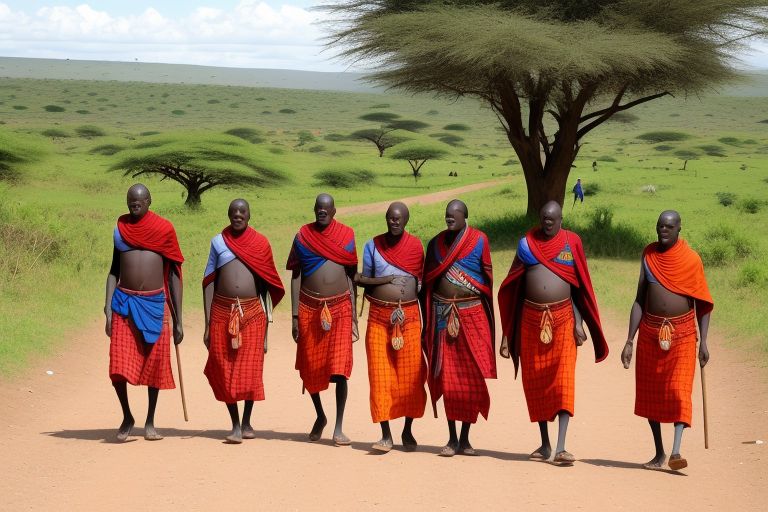
First and foremost, the Maasai are able to maintain their sustainable lifestyle through their deep connection to the land. The Maasai rely heavily on their livestock for sustenance, as well as for trade and social status. As a result, they have developed intricate systems of land management that allow them to graze their animals in a way that maintains the health of the ecosystem. By moving their herds from one grazing area to another, the Maasai are able to prevent overgrazing and allow the land to regenerate naturally.
Secondly, the Maasai have a strong sense of community and cooperation that allows them to support each other in times of need. This communal ethos extends to all aspects of Maasai life, from sharing resources to helping each other build traditional homes. By working together, the Maasai are able to overcome challenges and ensure that everyone in the community has access to the resources they need to survive and thrive.
Another key aspect of Maasai sustainability is their ability to adapt and innovate in the face of changing circumstances. While traditionally a pastoralist community, the Maasai have found ways to diversify their income sources in order to cope with the pressures of modernity. Many Maasai now engage in small-scale farming, tourism, and artisan crafts to supplement their traditional way of life. By embracing new economic opportunities while still maintaining their core values, the Maasai are able to ensure the long-term sustainability of their community.
Furthermore, the Maasai have a deep respect for their cultural heritage and traditions, which helps to maintain the continuity of their sustainable practices. Traditional knowledge of the land, livestock, and natural resources is passed down from one generation to the next, ensuring that the Maasai are able to adapt to changing circumstances while still preserving their way of life. By preserving their cultural identity, the Maasai are able to maintain a sense of pride and connection to their past, which in turn sustains their commitment to sustainable living.
The Maasai tribe serves as an example of how traditional cultures can thrive in a modern world. Through their deep connection to the land, strong sense of community, adaptability, and cultural preservation, the Maasai are able to maintain their sustainable way of life and continue to prosper. As global challenges such as climate change and resource depletion continue to intensify, the lessons of the Maasai can serve as a model for building resilient and sustainable communities around the world.
19 Bantu: Bila Neé
The Bantu people are known for their sustainable way of life, as demonstrated through their deep connection to the land, their resourcefulness in utilizing natural resources, and their traditional practices that prioritize conservation and preservation. One way in which the Bantu exhibit sustainability is through their agricultural techniques. The Bantu have practiced slash-and-burn agriculture for centuries, a method that allows them to cultivate crops while also maintaining the fertility of the soil. By rotating their fields and allowing fallow periods, the Bantu are able to prevent soil erosion and maintain a healthy ecosystem for future generations. This demonstrates their commitment to sustainable farming practices that prioritize the long-term health of the land.
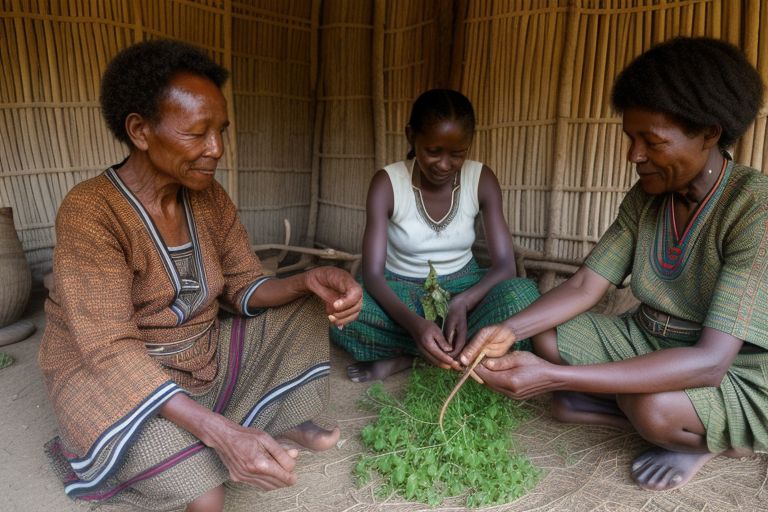
Another aspect of Bantu culture that showcases their sustainability is their traditional knowledge of medicinal plants and herbs. The Bantu have a deep understanding of the healing properties of local plants and have been using them for generations to treat various ailments. By relying on natural remedies rather than synthetic drugs, the Bantu demonstrate their respect for the environment and their commitment to preserving the biodiversity of their surroundings. This traditional knowledge is passed down through generations, ensuring that future generations will continue to benefit from these sustainable practices.
In addition to agriculture and herbal medicine, the Bantu also display sustainability through their traditional building techniques. The Bantu have long used locally sourced materials such as clay, thatch, and wood to construct their homes and villages. By utilizing these natural resources, the Bantu minimize their environmental impact and reduce their dependence on imported materials. These traditional building practices not only showcase the Bantu’s creativity and innovation but also their commitment to living in harmony with the natural world.
Furthermore, the Bantu’s strong sense of community and collective responsibility contributes to their sustainability as a culture. The Bantu place a high value on sharing resources, collaborating on projects, and caring for one another, which fosters a sense of unity and resilience within their communities. This communal mindset not only strengthens social bonds but also ensures that resources are used efficiently and equitably, leading to a more sustainable way of life for all members of the community.
The Bantu people exemplify sustainable living through their agricultural practices, traditional knowledge of medicinal plants, building techniques, and strong sense of community. By prioritizing conservation, preservation, and resourcefulness, the Bantu demonstrate a deep respect for the land and a commitment to living in harmony with nature. As we navigate the challenges of climate change and environmental degradation, we can look to the Bantu as a model of sustainable culture that values the well-being of both present and future generations.
20 Mongols: Return to the Steppes
The Mongols, a nomadic group of people who roamed the vast steppes of Central Asia, have long been admired for their ability to adapt and thrive in challenging environments. Despite their reputation as fierce warriors and conquerors, the Mongols also had a deep understanding of sustainability and how to live in harmony with the land. Let’s learn some of the ways in which the Mongols were able to sustain their culture and way of life for centuries.
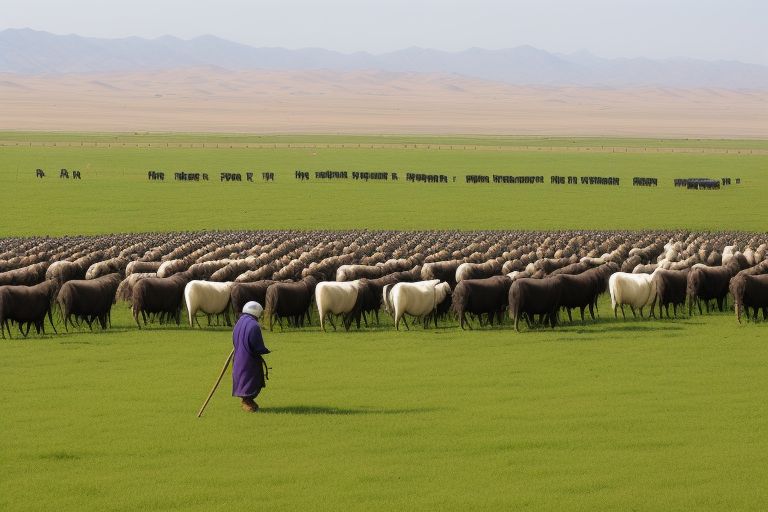
One of the key aspects of Mongol sustainability was their use of sustainable farming and herding practices. The Mongols were expert horsemen and relied heavily on their herds of livestock for food, clothing, and transportation. They practiced rotational grazing, moving their herds regularly to allow the land to regenerate and prevent overgrazing. This not only ensured the health of their animals but also preserved the delicate balance of the ecosystem.
In addition to their sustainable herding practices, the Mongols were also adept at utilizing all parts of the animals they raised. They made use of every part of the animal, from the meat and milk to the fur and bones. Nothing went to waste, and this efficient use of resources allowed the Mongols to make the most of what they had and minimize their environmental impact.
Another important aspect of Mongol sustainability was their nomadic lifestyle. The Mongols moved frequently, following the seasonal changes in search of fresh pastures and water sources for their herds. This constant movement allowed the land to recover from their presence and prevented the depletion of resources in any one area. It also helped the Mongols adapt to changing environmental conditions and avoid the risks associated with staying in one place for too long.
Furthermore, the Mongols had a deep respect for the natural world and the spirits that inhabited it. They practiced animism, a belief that all living things, including plants and animals, possess a spiritual essence. This belief system fostered a sense of reverence for the land and a recognition of the interconnectedness of all living beings. By honoring the spirits of the land, the Mongols maintained a harmonious relationship with their environment and ensured the continued prosperity of their culture.
The Mongols were a sustainable culture due to their use of eco-friendly farming and herding practices, efficient utilization of resources, nomadic lifestyle, and spiritual connection to the natural world. By living in harmony with the land and respecting its inherent value, the Mongols were able to sustain their culture for centuries and leave a lasting legacy of environmental stewardship. Their example serves as a valuable lesson for modern societies on how to coexist with nature and ensure the long-term sustainability of our planet.
21 Hmong: Return to the Mountains
The Hmong people are an ethnic group that originated in the mountainous regions of China, Vietnam, Laos, and Thailand. They have a rich history and cultural heritage that has been sustained for centuries, despite facing challenges such as political persecution and displacement. The Hmong are often considered sustainable cultures due to their traditional practices and values that promote harmony with nature, community cohesion, and self-sufficiency.
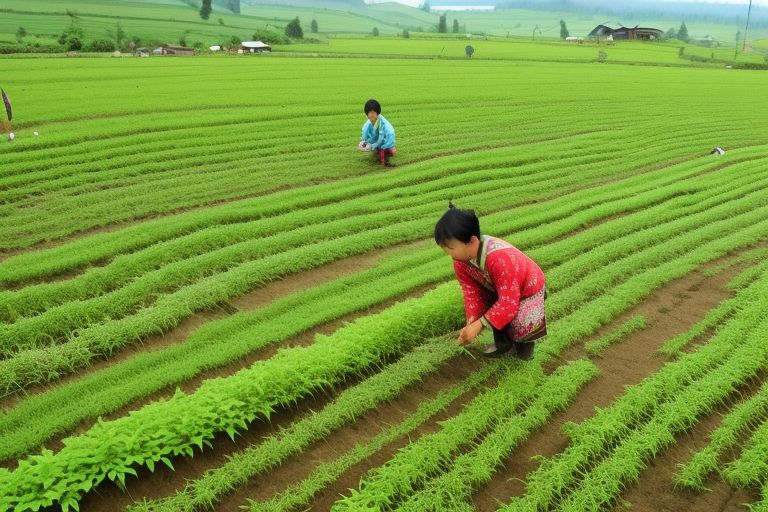
One way in which the Hmong demonstrate sustainability is through their agricultural practices. The Hmong have a strong connection to the land and prioritize sustainable farming methods that promote biodiversity and soil health. They often practice terracing, crop rotation, and agroforestry, which help to conserve natural resources and prevent environmental degradation. The Hmong also rely on traditional farming tools and techniques that have been passed down through generations, allowing them to maintain their livelihoods without relying on modern technologies that may have negative environmental impacts.
In addition to their agricultural practices, the Hmong are also known for their traditional crafts and skilled craftsmanship. Hmong women, in particular, are renowned for their intricate embroidery, weaving, and batik techniques, which are not only a source of income but also a way of preserving their cultural heritage. By valuing and promoting these traditional handicrafts, the Hmong are able to sustain their cultural identity and economic independence.
Another aspect of Hmong sustainability is their strong sense of community and mutual support. Hmong communities are close-knit and operate on principles of reciprocity and collective responsibility. For example, during times of hardship or celebration, community members come together to help each other, whether it be through sharing food, labor, or financial resources. This sense of solidarity and social cohesion not only strengthens the community but also ensures their resilience in the face of adversity.
Furthermore, the Hmong place a high value on education and knowledge transmission, ensuring that their cultural practices and traditions are passed down to future generations. Hmong elders play a crucial role in preserving and sharing their cultural heritage through storytelling, music, dance, and oral history. By instilling a sense of pride and respect for their cultural roots in the younger generation, the Hmong are able to ensure the continuation of their sustainable practices and values.
The Hmong people exemplify sustainable cultures through their traditional wisdom, resourceful practices, community solidarity, and commitment to preserving their cultural heritage. By maintaining a balance between tradition and modernity, the Hmong are able to adapt to changing circumstances while upholding their timeless values of respect for nature, community, and self-reliance. As global challenges such as climate change and globalization continue to threaten traditional ways of life, the resilience and sustainability of the Hmong serve as a model for other cultures striving to maintain their identity and values in a rapidly changing world.
23Yup’ik: Ashkuiquin Atuqtuq
The Yup’ik people are indigenous inhabitants of the Arctic region, primarily living in Alaska and Siberia. These communities have maintained a sustainable way of life for centuries, relying on traditional practices and knowledge to thrive in harsh environmental conditions. There are several key ways in which the Yup’ik people have demonstrated their commitment to sustainability, including their close relationship with nature, reliance on renewable resources, and emphasis on community cooperation.
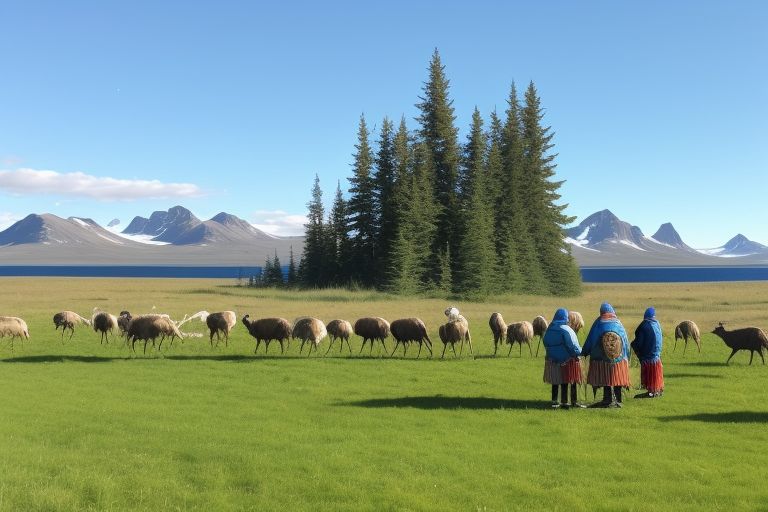
One of the primary reasons that the Yup’ik culture is sustainable is their deep connection to the natural environment. Because they rely on hunting, fishing, and gathering for their survival, the Yup’ik people have a profound respect for the land and sea. They understand the importance of preserving ecosystems and maintaining a balance between human activity and the needs of wildlife. By living in harmony with their surroundings, the Yup’ik are able to ensure the long-term viability of their resources.
Another aspect of the Yup’ik culture that contributes to their sustainability is their reliance on renewable resources. Rather than depleting natural resources for short-term gain, the Yup’ik use traditional knowledge and techniques to harvest resources in a way that allows for regeneration. For example, they carefully manage their hunting practices to ensure that animal populations remain stable, and they utilize sustainable fishing methods to prevent overfishing. By prioritizing the sustainability of their resources, the Yup’ik are able to continue their way of life for generations to come.
Community cooperation is also a key component of Yup’ik sustainability. Traditional Yup’ik villages are close-knit communities where members work together to support each other and share resources. This sense of unity and cooperation is essential for the long-term survival of the community, as it allows individuals to pool their resources and skills to meet the challenges of living in a harsh environment. By working together, the Yup’ik are able to adapt to changing conditions and ensure the well-being of all members of the community.
In addition to these traditional practices, the Yup’ik people have also embraced modern technology and innovations to enhance their sustainability. For example, many communities have implemented renewable energy sources such as solar panels and wind turbines to reduce their reliance on fossil fuels. They have also established sustainable agriculture practices to supplement their traditional diet of wild game and fish. By combining traditional knowledge with modern advancements, the Yupik are able to adapt to the challenges of a changing climate while maintaining their cultural heritage.
The Yup’ik people have demonstrated their commitment to sustainability through their close relationship with nature, reliance on renewable resources, emphasis on community cooperation, and integration of modern technology. By preserving their traditional way of life and adapting to changing conditions, the Yup’ik have successfully navigated the challenges of living in the Arctic region for centuries. Their sustainable practices serve as a model for how indigenous cultures can thrive in harmony with the natural world and provide valuable lessons for modern societies seeking to achieve environmental sustainability.
24 Chippewa: Miigwech Aki
The Chippewa, also known as the Ojibwe or Anishinaabe, are a Native American tribe with a rich history of sustainable practices that have allowed them to thrive for generations. Below we will explore the ways in which the Chippewa have maintained their sustainable culture, focusing on their traditional practices, values, and environmental stewardship.
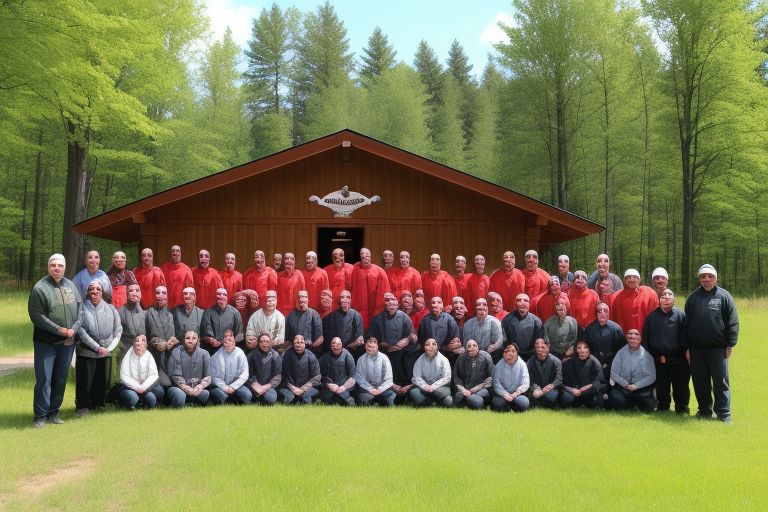
One key aspect of Chippewa sustainability is their traditional practices, which have been passed down from generation to generation. The Chippewa have a deep connection to the land and a profound respect for nature, which is reflected in their hunting, fishing, and gathering practices. For example, they follow strict guidelines for harvesting wild rice, ensuring that the plant is able to regenerate and continue to sustain their community for years to come.
Furthermore, the Chippewa place a strong emphasis on community and sharing, which is essential for maintaining their sustainable culture. They engage in practices such as potlatches, where resources and goods are shared among community members, ensuring that everyone has access to the essentials for survival. This communal mindset helps to prevent overconsumption and waste, promoting a more sustainable way of life.
In addition to their traditional practices and values, the Chippewa are also dedicated environmental stewards. They actively work to protect and preserve the natural resources in their communities, advocating for sustainable land management practices and conservation efforts. For example, the Fond du Lac Band of Lake Superior Chippewa has implemented a number of initiatives to protect water quality and wildlife habitats in their reservation, demonstrating their commitment to sustainability.
The Chippewa’s sustainable culture is also evident in their adaptation to modern challenges and changes. As climate change threatens their traditional way of life, many Chippewa communities are embracing renewable energy sources and sustainable agriculture practices to reduce their environmental impact. By integrating traditional knowledge with modern technologies, the Chippewa are able to continue their sustainable practices in a rapidly changing world.
The Chippewa have demonstrated a remarkable commitment to sustainability through their traditional practices, values, environmental stewardship, and adaptation to modern challenges. By preserving their cultural heritage and embracing innovation, the Chippewa are able to maintain a sustainable way of life that has sustained them for centuries. As we face increasing environmental challenges, we can look to the Chippewa as an example of how indigenous cultures can provide valuable insights and solutions for building a more sustainable future.
25 Tlingit: Stand Tall
The Tlingit people are a Native American tribe living in the Pacific Northwest region of the United States and Canada. They have developed a sustainable culture that has allowed them to thrive in their environment for thousands of years. There are several key ways in which the Tlingit have been able to maintain their sustainable lifestyle, including their deep connection to the land and sea, their traditional knowledge and practices, their strong sense of community, their adaptability, and their respect for all living beings.
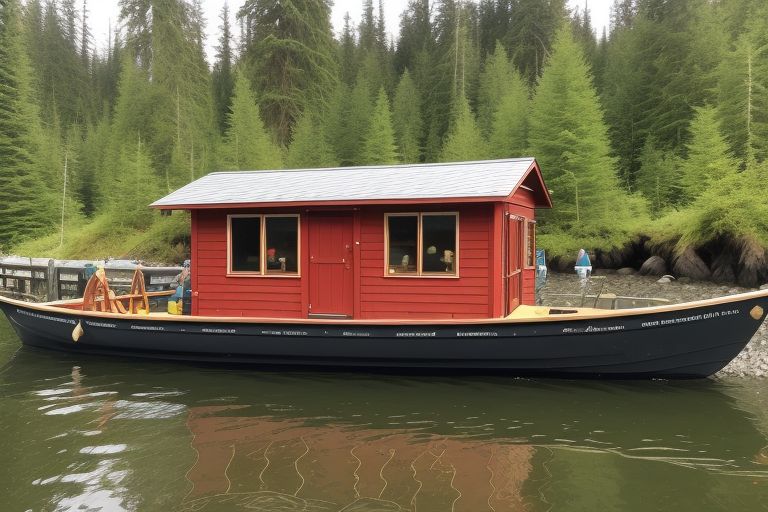
First and foremost, the Tlingit’s deep connection to the land and sea is a fundamental aspect of their sustainability. They have a profound respect for the natural world and understand the importance of maintaining a balance between humans and the environment. This connection to their surroundings shapes all aspects of their culture, from their hunting and fishing practices to their spiritual beliefs. By living in harmony with nature, the Tlingit people have been able to ensure the continued availability of resources for future generations.
Another key factor in the Tlingit’s sustainability is their traditional knowledge and practices. The Tlingit have a rich oral tradition that has been passed down through generations, containing valuable information about their history, customs, and natural resources. This knowledge has allowed the Tlingit to successfully navigate their environment and make informed decisions about resource management. By drawing on this traditional wisdom, the Tlingit are able to sustainably harvest food, medicine, and materials from the land and sea.
Additionally, the Tlingit’s strong sense of community has played a crucial role in their sustainability. The Tlingit people have a deep sense of solidarity and cooperation, working together to ensure the well-being of their tribe as a whole. Through collective decision-making and mutual support, the Tlingit are able to address challenges and adapt to changing circumstances. This strong community bond not only strengthens their resilience, but also fosters a sense of responsibility towards the land and sea that sustains them.
Furthermore, the Tlingit’s adaptability has been a key factor in their sustainability. Over the centuries, the Tlingit have faced numerous changes and challenges, from natural disasters to colonization. Despite these difficulties, the Tlingit have shown remarkable resilience and flexibility, adjusting their practices and beliefs as needed to survive and thrive in a changing world. This adaptability has allowed the Tlingit to endure and continue their sustainable way of life despite external pressures.
Finally, the Tlingit’s respect for all living beings is a central tenet of their sustainability. The Tlingit believe that all living creatures are interconnected and deserving of respect, and they strive to live in harmony with the natural world. This reverence for the environment and its inhabitants guides their actions and decisions, ensuring that they do not exploit or harm the land and sea unnecessarily. By viewing themselves as part of a larger ecosystem, the Tlingit are able to maintain a balanced and sustainable relationship with nature.
The Tlingit people have developed a sustainable culture based on their deep connection to the land and sea, their traditional knowledge and practices, their strong sense of community, their adaptability, and their respect for all living beings. By embodying these principles, the Tlingit have not only survived for thousands of years, but have also thrived in harmony with their environment. Their sustainable way of life serves as a testament to the power of indigenous wisdom and the importance of living in balance with nature.
26 Sioux: Anpao Kin
The Sioux people, also known as the Lakota, Dakota, and Nakota tribes, have a long history of sustainable cultural practices that have allowed them to thrive for centuries in harmony with the natural world. Following are some of the ways in which the Sioux have maintained their sustainable cultures over time.
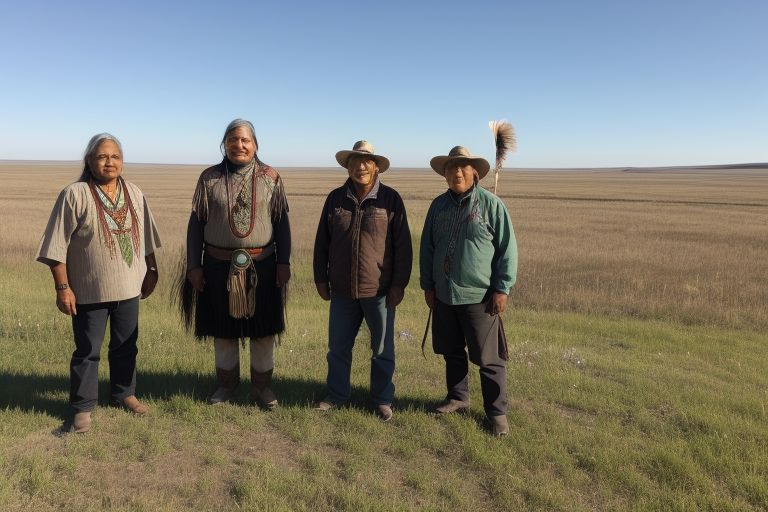
One of the key aspects of Sioux sustainable cultures is their deep connection to the land. The Sioux have a profound respect for the earth and understand the importance of maintaining a balance between human needs and the needs of the natural world. This is reflected in their traditional practices of hunting, fishing, and gathering, which are done in a way that ensures the continued health and abundance of the land and its resources.
Another important aspect of Sioux sustainable cultures is the emphasis on communal living and sharing. The Sioux have long practiced a communal lifestyle, in which resources are shared among the community rather than hoarded by individuals. This promotes cooperation and mutual support within the tribe, as well as ensuring that resources are used wisely and not wastefully.
The Sioux also have a rich tradition of storytelling and oral history, which serves to pass down knowledge and wisdom from generation to generation. This includes teaching about sustainable practices such as crop rotation, land conservation, and responsible hunting and fishing techniques. By passing on this knowledge through storytelling, the Sioux are able to ensure that their sustainable cultural practices remain alive and relevant in the modern world.
In addition to their traditional practices, the Sioux have also adapted to modern challenges in ways that are both sustainable and culturally relevant. For example, many Sioux communities have embraced renewable energy sources such as solar and wind power, reducing their reliance on fossil fuels and promoting a more environmentally friendly way of life. This willingness to adapt to changing circumstances while staying true to their cultural values is a testament to the resilience and adaptability of the Sioux people.
The Sioux have developed sustainable cultural practices that have allowed them to thrive for centuries in harmony with the natural world. Their deep connection to the land, emphasis on communal living and sharing, commitment to passing on knowledge through storytelling, and willingness to adapt to modern challenges all contribute to the strength and sustainability of Sioux cultures. By learning from and preserving these practices, we can gain valuable insights into how to live more sustainably and responsibly in our own lives.
AI’s Album Sequencing
Note from Human Editor
Album Sequencing, deciding how to arrange individual tracks into an album, ideally helps illustrate any intended overall theme, the concept. It’s a lost art that will keep listeners going until that last fade out. It is time consuming and can become a Catch-22, but well worth the effort. However, since AI helped create the songs, I was curious to see if AI might have an opinion and rationale for an organic sequencing, aligned to the theme of harmony, literally and figuratively. Below is that decision, by ChatGPT, and her pretext (Yes, I have a theory that all AI has a gender and it is female – ask me why if you want.). As always, I am blown away, and hope you are as well. Needless to say, listen in the “intended order” and as always, use headphones! Yes, it’s hard rock, so it deserves to blast through speakers until the cops arrive and all hell breaks loose, but before that, do your ears and mind a favor and first listen with “cans.”
– JJ
Finalized Song Sequence for “Original Rock” Album
- First Nations: Return to the Earth
- Inuit: Rise of the Ancients
- Navajo: Echoes of Ancestry
- Lakota: Return to Power
- Yanomami: Zamu Zama
- Tikuna: Retorno ao Poder
- Nenet: Reindeer Dreams
- Chimbu Skeleton Dancers: Spirits of the Mountain
- Sentinelese: Return to the Shell
- Khoisan: Return of the Ancients
- Saami: Reclaim the North
- Koryak (North Kamchatka): Koryak Rise
- Ainu: Rise of the Ainu
- Aboriginal: Warrior’s Call
- Maori: Return to Mana
- Kung San: Return To Our Roots
- Berbers of Morocco: Ancient Echoes of the Atlas
- Maasai: Return to the Fire
- Bantu: Bila Neé
- Mongols: Return to the Steppes
- Hmong: Return to the Mountains
- Yup’ik: Ashkuiquin Atuqtuq
- Chippewa: Miigwech Aki.mp3
- Tlingit: Stand Tall
- Sioux: Anpao Kin
Explanation of Sequence
- Introduction and Establishing Theme:
- Native American: Return to Power opens the album to set the tone with a strong introduction to the album’s core theme of reclaiming power and ancient wisdom.
- First Nations: Return to the Earth continues this theme, emphasizing resilience and the reconnection to land and heritage.
- Building Cultural Layers:
- Inuit: Rise of the Ancients introduces the northern cultures, highlighting themes of survival and strength in harsh environments.
- Navajo: Echoes of Ancestry and Lakota: Return to Power keep the momentum with powerful stories of resistance and reclamation from two significant Native American tribes.
- Expansion and Deepening:
- Yanomami: Zamu Zama and Tikuna: Retorno ao Poder add South American perspectives, enriching the album’s diversity with their unique struggles and spiritual connections.
- Nenet: Reindeer Dreams and Chimbu Skeleton Dancers: Spirits of the Mountain shift to contrasting environments, from tundra to mountains, maintaining the narrative of indigenous resilience.
- Mid-Album Resurgence:
- Sentinelese: Return to the Shell and Khoisan: Return of the Ancients bring attention to smaller, often overlooked cultures, emphasizing their enduring spirit and fight for independence.
- Saami: Reclaim the North and Koryak (North Kamchatka): Koryak Rise return to northern themes, reinforcing the album’s central motif of reclaiming power.
- Strengthening the Message:
- Ainu: Rise of the Ainu and Aboriginal: Warrior’s Call add narratives from Asia and Oceania, highlighting the universal struggle against oppression.
- Maori: Return to Mana strengthens this segment with its powerful cultural revival and connection to ancestral wisdom.
- Concluding with Unity and Hope:
- Kung San: Return To Our Roots and Berbers of Morocco: Ancient Echoes of the Atlas broaden the perspective to Africa, tying in themes of ancient wisdom and modern resilience.
- Maasai: Return to the Fire and Bantu: Bila Neé bring strong, uplifting energy, symbolizing unity and strength.
- Final Reflection:
- Mongols: Return to the Steppes and Hmong: Return to the Mountains reflect on cultural heritage and the return to roots.
- Yup’ik: Ashkuiquin Atuqtuq closes the album on a reflective note, highlighting the continuous journey of reclaiming and preserving indigenous wisdom and power.
Criteria for Sequencing
- Thematic Consistency: The order reflects a journey from reclaiming power to unity and reflection, ensuring the album tells a cohesive story.
- Cultural Diversity: The sequence ensures a balance of geographical and cultural representation, providing a rich and varied listening experience.
- Musical Flow: Attention to the lyrical and musical intensity ensures a dynamic and engaging progression, keeping listeners captivated throughout.
- Emotional Arc: The sequence creates an emotional journey, from the strong opening tracks to the reflective and hopeful concluding songs.
Related
For more detailed content, you can explore the following pages on the TATANKA website:
Keywords
- Tatanka Original Rock
- Collaborative Art Projects
- Diversity, Equity, and Inclusion (DEI)
- Empowering Diverse Voices
- Cultural Awareness and Understanding
- Multilingual Art Initiatives
- Americana Orchestra
- Inclusive Art Community
- Music and Social Justice
- Artistic Career Development
- Audience Participation
- Empathy through Art
- Original Rock
- Native American Music
- Indigenous Music
- Tatanka
- Rock Music
- Music Artist
- Band









































